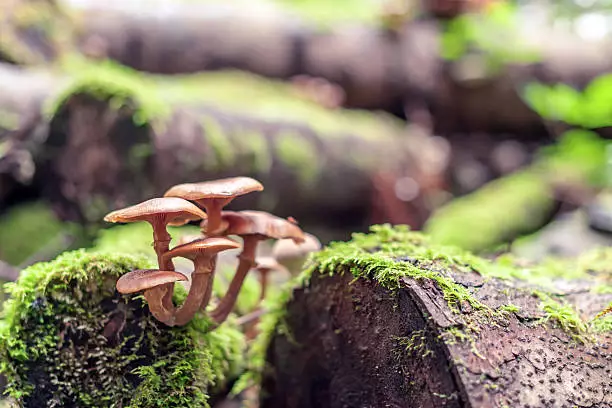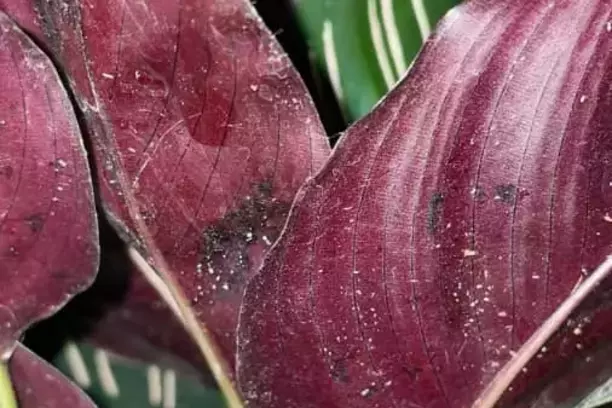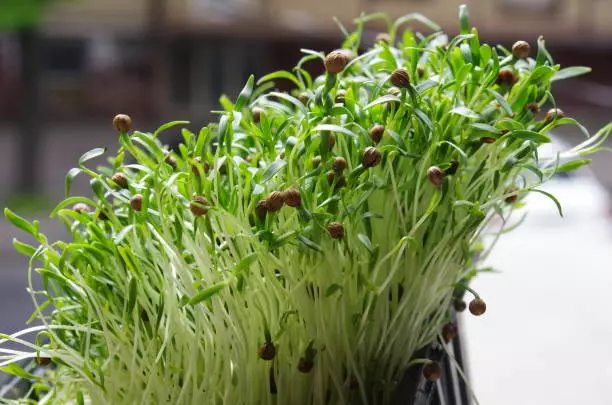Browning of leaves is very common in areca palms. It is part of the growth, and it eventually fades off. But, if the browning persists establish the causes and use the appropriate approaches to fix it.
Areca palm tips and leaves turn brown due to overwatering, underwatering, nutrient deficiency, diseases, pests, and compacted roots. To fix the brown leaves, fertilize the plant, water it when the top 1-2 inches of soil is dry, and provide bright indirect sunlight. Also, get rid of pests like spider mites on your areca palm.
Browning of leaves can be fatal and lead to the death of your areca palms. So, attend to the plants after noticing the early signs. Or else, you can take precautionary measures like optimal humidity, moist soils, optimal use of fertilizers, and misting to prevent pests.
What causes brown tips on areca palm?

Browning of areca palms stems from overwatering, under watering, low humidity, pests and disease, nutrients deficiency, excessive use of manure, and compact root systems. The causes interfere with the absorption and transportation of nutrients and water to the leaves.
So is the browning of areca palms leaves fixable? Yes, the browning can be corrected using soil fertilization treatment, pruning, misting, and repotting. Here are the causes in detail.
Overwatering
Areca palms appreciate well-drained soils and moderate watering. Overwatering your areca palms will lead to root disease and nutrients leaching. Nutrient leaching and root will cause browning of leaves and premature death of leaves.
Leaching of nutrients mostly happens to areca palms growing in the garden. Overwatering or heavy rains lead to the leaching of essential nutrients that areca palms need for growth. Leaching of nutrients beyond the fibrous root system of the palm tree deprives your areca palms of vital nutrients for growth. Though it is a temporary effect, it leads to browning and falling off of areca palm leaves. When the roots grow deeper, they recycle the leached nutrients.
RELATED: HOW DEEP DO PALM TREE ROOTS GROW
Root rot disease damages areca palm healthy roots. Leaves depend on roots for the supply of essential growth nutrients. So, if the roots rot, it means no supply of enough growth nutrients to the leaves. Thus, due to the deprivation of nutrients, leaves turn brown and prematurely die.
Insufficient lighting
Areca palms grow well under optimal lighting conditions. Lack of enough either direct or indirect sunlight leads to browning of the new leaves’ growth. If areca palms do not get enough light, they cannot produce chlorophyll. Chlorophyll is the green pigmentation of the leaves. So, the lack of chlorophyll will lead to the browning of leaves.
So, if insufficient lighting leads to the browning of leaves, does it mean too much light is good? No, too much light will burn the leaves. Sunburnt leaves turn brown. So in the garden plant your areca palms under partial sunlight. If planting indoors, place them by the window, and you can take them outside in the morning or evening to get direct light. In winter, you use LED grow lights to maintain optimal lighting conditions.
Under-watering
Areca palms are quite dramatic. Underwatering your areca palms will lead to:
- Slow photosynthesis: photosynthesis needs water to produce food and energy. So, if there is no sufficient water, photosynthesis slows down resulting in low amounts of food for the plant. This causes wilting and eventually browning of leaves, a slow growth rate of your areca palm, and death.
- Transportation of nutrients: lack of enough water hinders the moving of nutrients up the stem. Lack of enough water softens the roots, rendering them unable to absorb and transport enough nutrients.
If the leaves do not get enough water and nutrients, they turn brown, dry, and die.
RELATED: HOW FAST DOES THE ARECA PALM GROW
Nutrient deficiency
Plants, including areca palms, need growth nutrients for chlorophyll formation. Lack of enough growth nutrients will lead to yellowing of leaves and later browning. You can identify the lack of enough nutrients in your plants through leaf diagnosis. Browning resulting from immobile nutrients will start showing on the new foliage. While browning resulting from mobile nutrients will start showing from the older foliage.
Some of the minerals that its deficiency will lead to browning include, nitrogen, potassium, magnesium, manganese and iron.
Potassium deficiency is the most common nutritional disorder of areca palms. Potassium deficiency results from a lack of potassium in the soil. Lack of enough potassium either results from nutrient leaching or the presence of high nitrogen fertilization. Potassium deficiency starts showing from the older foliage and causes severe leaf necrosis.
Insufficient nitrogen in the soil leads to nitrogen chlorosis, weak trunks and the fibrous woody tissue that forms the palm tree. This happens when there is an addition of organic materials high in carbon content to the soil. Microorganisms will use the available nitrogen to break down the carbon molecules. Thus, depleting the available nitrogen in the soil. Nitrogen deficiency starts showing on the older foliage.
RELATED: WHAT ARE THE USES OF PALM TREE WOOD
Lack of enough iron for the plants leads to iron chlorosis. The presence of lime and high pH levels, above 7.0, solidifies iron. The solid iron forms a plastic-like layer in the soil that prevents proper aeration and infiltration of water. Reduced water infiltration leads to waterlogging that causes root rot to areca palm roots. The result is browning and dying of leaves. Iron deficiency starts showing on the new foliage.
Lack of enough manganese, magnesium, potassium and boron also causes the browning of areca palm leaves. Lack of enough manganese in the soil reduces root activity. Boron deficiency is very chronic as it affects the new growth of leaves.
Use of excessive manure
Organic manure contains high contents of ammonia and salts. The high contents of ammonia and salts harm beneficial microbes and roots. Any harm to the microorganisms limits decomposition of organic matter. And, damaging the root system prevents efficient absorption and transportation of nutrients. The deficiency of nutrients causes the browning of leaves.
The use of regular fertilizers with high nitrogen and potassium reduces the growth rate and quality of your areca palms. Also, high nitrogen levels will cause potassium deficiency in the soil. So, apply well-balanced fertilizer to prevent the browning of leaves and other significant damages to the plant.
Low humidity
Pests such as spider mites and mealybugs love dry surfaces. Low humidity will leave the surfaces of your areca palms dry and dusty. In return, it will attract spider mites and mealybugs that will feed on the sap of the stem inhibiting transportation of nutrients and water: the result, browning of leaves.
So, to prevent this regularly mist your areca palms or use a humidifier to keep the area humid.
Pests and diseases
Mealybugs and spider mites are the common pests that attack your areca palm plants. These pests enjoy feeding on the dust that accumulates on areca palm stems in low humidity areas. The pests feed on the dust and suck the plant sap into the stem system. This damages the stems and interferes with the transportation of nutrients to the leaves, thus, causing browning. To prevent pest attacks, mist your areca palms or use a humidifier to raise humidity levels.
The primary disease that affects areca palms is root rot and pink rot. Root rot affects the root system of areca palms. Limiting the absorption and transportation of enough nutrients to the leaves, causing browning of leaves. Pink rot is more of an opportunistic disease that affects an already weak plant. Pink rot enters into the plant through pruning wounds, landscape maintenance injuries and freezes damages.
So, avoid overwatering your areca palms to prevent root rot disease. And, always remove old dry leaves during warm and dry weather conditions to prevent pink rot disease. Only remove the leaves when they can easily detach from the plant.
Compact roots
Compacted roots are very dangerous to the proper growth of your indoor areca palms. Compaction weakens the root system, causes root rot, and limits the absorption and transportation of nutrients. This leads to the browning of leaves of indoor areca palms. So, avoid planting your areca palms in a small plant plot.
How to fix brown leaves and tips on areca palm

Soil fertilization treatment
This is a slow responding treatment approach. So, use this method to treat mild browning of leaves. Use potassium-rich and nitrogen-rich fertilizers and iron chelates to substitute for the leached nutrients. Also, these fertilizers enrich the soil and enhance the fast growth of areca palms.
Below are two ways of soil-fertilization treatment:
- Application of potassium-rich and nitrogen-rich fertilizers.
- Adding iron chelates into the soil.
Here is the procedure for administering soil fertilization treatment:
- Apply the fertilizer or iron chelates into the topsoil.
- Make sure it is not beyond two inches of the topsoil.
- The fertilizer and the iron chelates will dissolve into the soil upon watering or when it rains.
Pruning
Pruning areca palms needs a lot of attention and careful handling. You can either trim the dead canes or the fronds. So, if the leaves turn brown and still have a ting of green color, try other treatment methods. Browning of areca palm leaves is part of growth, and it finally fades off. You can only trim the fronds off when they completely turn brown. There are two methods of pruning areca palms:
- Pruning the dead canes
- After determining if the cane is dead, prune the palm.
- Use a clean and sharp pair of clippers to remove small canes. Cut the ground level.
- If the base of the cane is large, use a clean saw to cut it off. Be keen to cut the ground level. This prevents the entry of pink rot fungus.
- Sterilize your tools before pruning the next areca palm plant.
- Pruning dead fronds
While pruning the fronds, ensure only to trim the dead leaves. Any leaves with green pigmentation should be left out.
Slowly pull off the wholly brown or dead leaves. Or, you can wait for the leaves to fall off the plant without pruning.
Repotting
Repotting your areca palms should be the last alternative treatment approach. Areca palms have a life-span of about 5-10 years. So, they don’t necessarily need any repotting if they are healthy. Repot only when you suspect the browning is resulting in root rot disease. Below is the repotting procedure:
- Remove the plant from the planter and wash off the soil from the roots under running water.
- Trim the affected mushy brown roots using a pair of scissors or shears.
- Disinfect the pair of scissors or shares in an alcohol-based solution.
- Clean the planter using pure, clean water and sterilize it using a bleaching solution.
- Sterilize remaining healthy roots in a fungicide solution to kill off the remaining root rot fungus.
- In a planter with enough drainage holes, add well-draining potting mix and replant your areca palm plant.
Should I cut off brown palm leaves?
Yes, cut off brown and dead areca palm leaves. In case of brown pinnate leaflets, make slanting cuts on both sides to maintain the original leaflet shape. Do not trim fronds with green pigmentation. This is because it can cause:
- Pink rot disease: the wound that remains after cutting off the leaves, provides an entry for pink rot fungus disease.
- The death of the entire leaf. If you trim the brown parts of the frond, the remaining part is likely to die.
References:
[1] University of Florida, IFAS Extension: Nutrients Deficiency
[2] The University of Texas at Austin: Browning of palms



